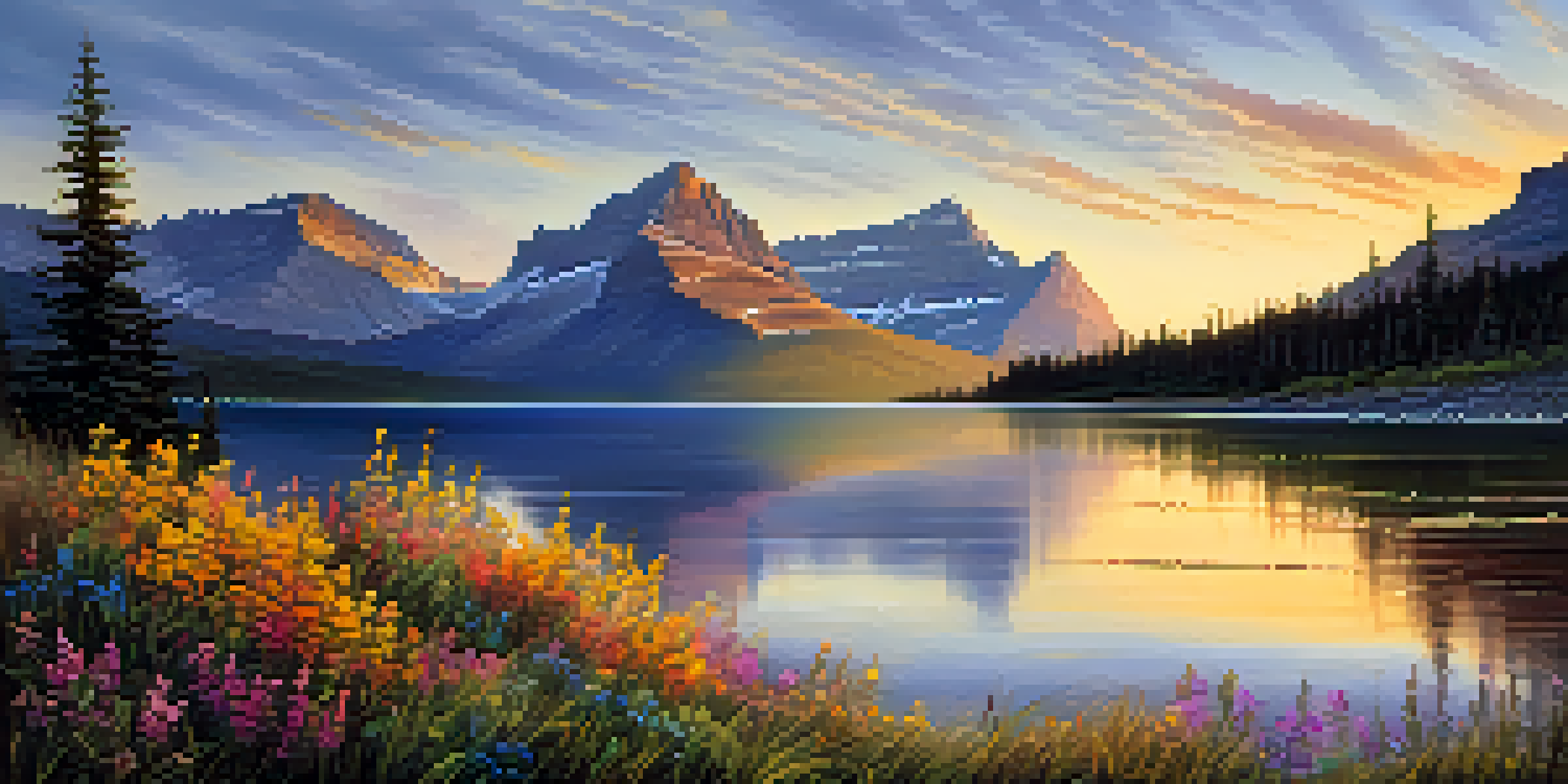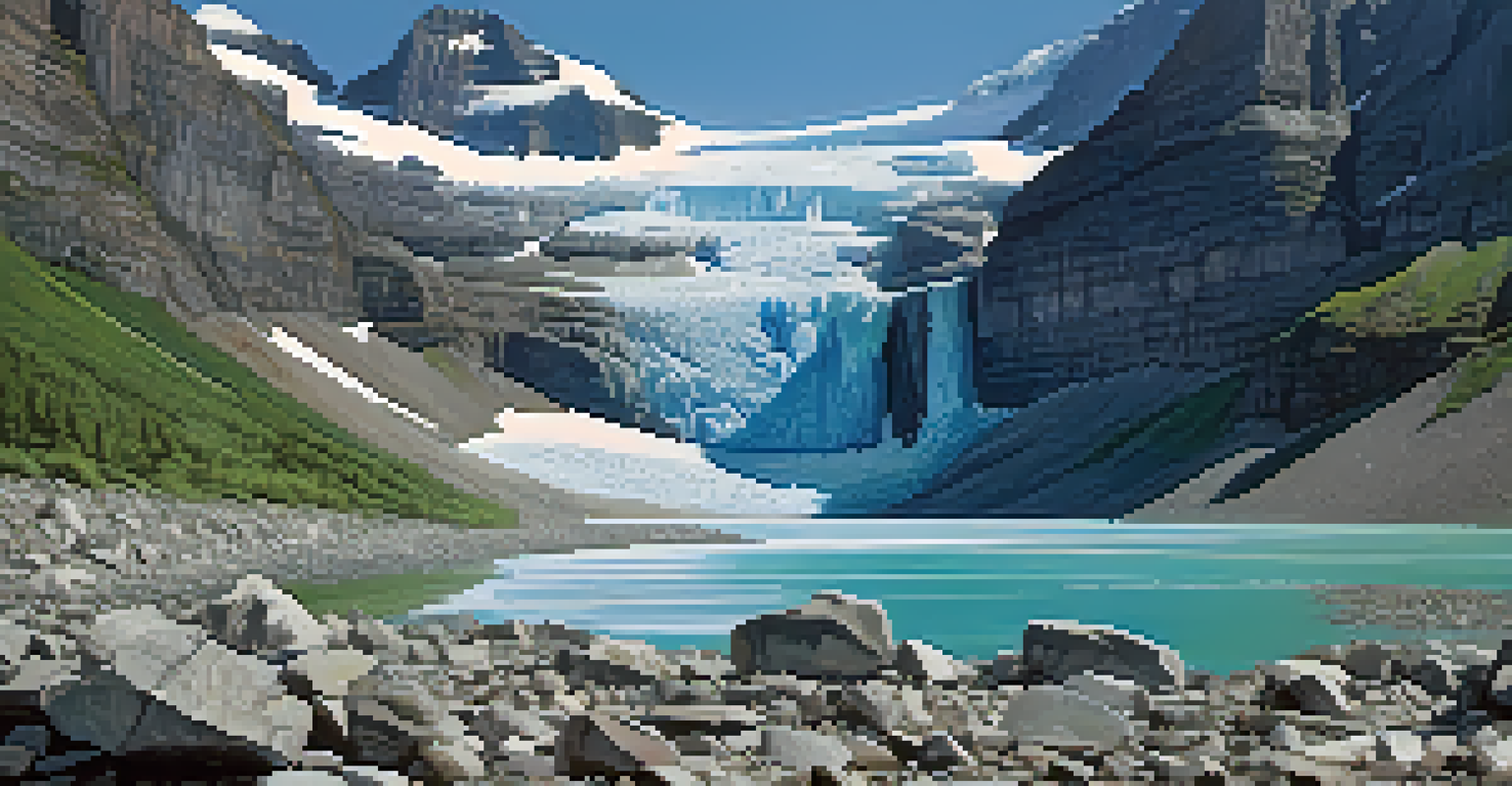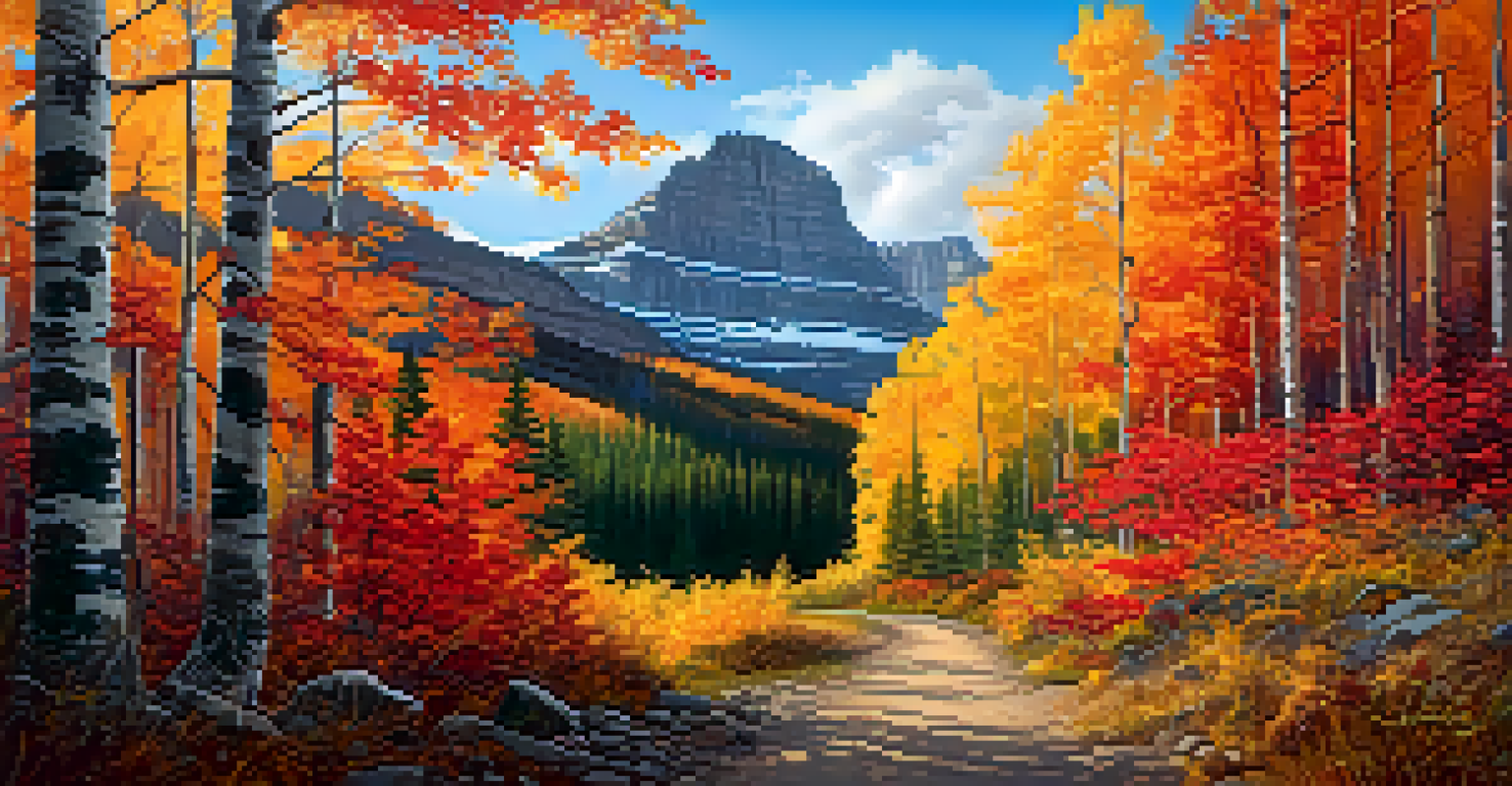The Majestic Beauty of Glacier National Park's Landscapes

Introduction to Glacier National Park's Stunning Landscapes
Glacier National Park, located in Montana, is one of the crown jewels of America's national parks. Its landscapes are a breathtaking blend of rugged mountains, tranquil lakes, and expansive forests. As you step into this natural wonder, you are immediately enveloped in a tapestry of colors and textures that change with each season, making every visit unique.
In every walk with nature one receives far more than he seeks.
Established in 1910, the park spans over a million acres and is home to over 700 miles of trails. This vast expanse offers something for everyone, from leisurely strolls to intense hikes. The park's diverse ecosystems host a variety of wildlife, including grizzly bears, mountain goats, and countless bird species, adding to its allure.
Whether you're an avid hiker or someone who prefers scenic drives, Glacier's landscapes never fail to impress. The iconic Going-to-the-Sun Road offers panoramic views of the majestic Rocky Mountains and pristine glacial lakes, making it a must-see for visitors.
The Iconic Glaciers That Shape the Park's Beauty
Glacier National Park is aptly named for its stunning glaciers, which have sculpted the landscape over thousands of years. These ancient ice masses, such as Grinnell Glacier and Jackson Glacier, not only create dramatic vistas but also serve as vital indicators of climate change. Observing their gradual retreat is a poignant reminder of nature's power and vulnerability.

The park is home to approximately 26 active glaciers, each with its own unique character. Visitors can embark on guided hikes to get up close and personal with these icy wonders. As you trek along the trails, the sound of cracking ice and the breathtaking blue hues of the glaciers will leave you in awe.
Breathtaking Landscapes Await
Glacier National Park features stunning mountains, lakes, and forests that change with each season, offering a unique experience for every visitor.
Moreover, these glaciers contribute to the park's diverse ecosystems. The meltwater feeds into the streams and rivers, fostering lush vegetation and supporting the wildlife that call this place home. It's a beautiful cycle of life that showcases the interconnectedness of nature.
Lakes and Rivers: Nature's Reflective Mirrors
The lakes and rivers of Glacier National Park are a sight to behold, offering serene reflections of the surrounding mountains. Notable spots like Lake McDonald and St. Mary Lake boast crystal-clear waters that change color with the seasons, creating a mesmerizing visual experience. Whether you're kayaking or simply enjoying a picnic by the shore, these bodies of water invite tranquility.
The earth has music for those who listen.
Fishing enthusiasts will also find paradise in these pristine waters, with opportunities to catch species like trout and whitefish. The calmness of the lakes is often interrupted by the joyful laughter of families and friends sharing special moments together. It’s a reminder of how nature can bring people closer.
In the early morning or at sunset, the lakes become a canvas painted with vibrant colors, offering perfect backdrops for photography. Each snapshot captures not only the beauty of the landscape but also the essence of adventure that Glacier inspires in its visitors.
The Diverse Flora: A Colorful Tapestry
The flora of Glacier National Park is as diverse as its landscapes, with over 1,000 species of plants flourishing in the region. From towering coniferous trees to vibrant wildflowers, every corner of the park is alive with color and life. In spring, the meadows burst into bloom, painting the landscape with hues of purple, yellow, and white.
Exploring the park's trails, you'll encounter unique plant species that thrive in various habitats. For instance, the alpine tundra is home to resilient plants that withstand harsh conditions, while lush forests boast towering trees that create a canopy of shade. This variety makes each hike an opportunity for discovery.
Wildlife and Flora Abound
The park is home to diverse wildlife and over 1,000 plant species, creating a vibrant ecosystem that enchants nature lovers and explorers alike.
Additionally, the rich plant life supports a variety of wildlife, creating a complex ecosystem. It’s fascinating to see how the flora not only enhances the park's beauty but also plays a crucial role in the health of the entire environment.
Wildlife Encounters: A Glimpse into Nature's Wonders
Glacier National Park is a sanctuary for diverse wildlife, offering visitors the chance to encounter animals in their natural habitats. From majestic elk grazing in meadows to playful otters sliding down rocks, the park is teeming with life. Observing these creatures in their environment is one of the most rewarding aspects of visiting Glacier.
The park is home to a variety of species, including grizzly bears, mountain goats, and over 260 species of birds. Each encounter is a reminder of the beauty and diversity of nature. However, it's essential to respect these animals and maintain a safe distance to ensure their well-being and yours.
Wildlife watching can be enhanced by joining guided tours or attending ranger-led programs. These experiences allow you to learn more about the behaviors and habitats of the park's inhabitants, making your visit even more enriching.
The Seasons: A Year-Round Spectacle
One of the most captivating aspects of Glacier National Park is its seasonal changes, each bringing a unique charm to the landscape. In summer, the park is alive with vibrant colors and bustling activity as visitors flock to hike, camp, and explore. The warm weather reveals lush greenery and blooming wildflowers, creating a picturesque setting.
As autumn approaches, the foliage transforms into a brilliant tapestry of red, orange, and gold. This season offers a quieter experience, where you can enjoy the stunning fall colors and the crisp air. It’s a perfect time for photographers looking to capture the park’s breathtaking beauty.
Conservation is Key
Protecting Glacier National Park from climate change and habitat destruction is essential to preserving its beauty and biodiversity for future generations.
Winter brings a serene stillness, blanketing the park in snow. While some trails may be closed, winter sports like snowshoeing and cross-country skiing offer new ways to experience Glacier's landscapes. The stark beauty of the frosty wilderness is a sight to behold, proving that every season has its own allure.
Conservation: Protecting Glacier's Beauty for Future Generations
As we admire the majestic beauty of Glacier National Park, it's crucial to acknowledge the importance of conservation efforts. The park faces numerous challenges, including climate change, habitat destruction, and invasive species. Protecting this natural treasure ensures that future generations can experience its wonders just as we do today.
Visitors can contribute to conservation by following Leave No Trace principles, which encourage responsible outdoor practices. Simple actions like staying on designated trails, packing out trash, and respecting wildlife can make a significant difference in preserving the park’s delicate ecosystems.

Moreover, supporting local conservation organizations and participating in volunteer programs can further enhance these efforts. Together, we can help safeguard Glacier National Park's breathtaking landscapes and the incredible biodiversity that thrives within them.